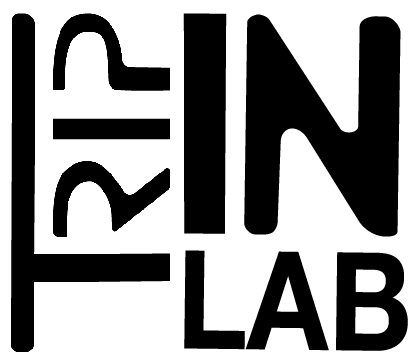
Basic
1 to 2 days
Creative
3 days to 1 week
Advanced
variable
Organize a Workshop with a Expert
The workshops are modular according to the theme and duration and are available in French and English.
CONCEPT
History of spatialization : Historical reference: technique, composition, media , architecture
Perception of sound space : Spatialization processes call upon several disciplines: computer science, acoustics, signal processing, psychoacoustics or cognition. The synthesis of the direction and distance of sound sources, sound propagation and sound reproduction is based both on the physical modelling of the phenomena involved and on models of spatial auditory perception.
Sound spatialization aesthetics : Aesthetic distinction of sound spaces from music, cinema, radio and video games.
Manifesto of free trajectory writing : Idea and position about spatial writing for sound works.
BASIC TECHNICS
Workflow: Study of the various possible workflows according to uses and destinations ( studio, stage)
Input / outputs: formats, types and device
3d to binaural, transaural or multichannel mastering.
Definition of the audio output destination (DAW return, room broadcast, etc.)
Virtual space : Space design module configuration: reverb size, mapping and character, stationary vs. moving sources, write, draw or import paths. Moving the listening position in the 3d environment (listener)
Sampler : mapping, trigger, playing
Scene memory / Cue Control : Study of different strategies for using scene memory changes
Controller : connect sound trajectory with Lemur or touchOSC on Ipad or Android Tablet
PRACTICE
- Sketch of a project or exercice
- Preparation of sound materials
- Import into DAW or sampler
- Trajectory writing
- Staging sounds in space
- Automation of trajectory index and other movements
- Mastering to destination : 360, binaural etc..
ADVANCED TECHNICS
Synthesis : Control of synthesis on and by trajectories (Soustractive, additive, Fm and granular synthesis)
3d effects : Use of spatial and temporal effects: space distribution, interactive effect follow audio trigger, enveloppe follower, spectral analysis, delay etc..
Audio Format : Model by audio channel (channel base) : mono, stereo, 5.1, 7.1 etc….
Model by audio object (object base): Dolby Atmos, ADM and others
The main spatialization algorithms: From mono to ambisonie via DBAP, VBAP and a little detour via WFS.
Interfacing with other sound spatialization solutions : Spat Revolution, Panoramix, Spat for Max, L-isa, Holophonix, Sonic Emotion,
Object Format: Multichannel source definition and manipulation
360° audio-video production : Using the video player synchronized to an external clock.
Good use of scene memories for shot changes.
Control with 3d sensors: by osc (gyrospcope/accelerometer Riot Ircam, Iphone, etc…) Example of 3d control of the Sampler: triggering and spatialization.
Algorithmic creation : import of trajectories made from 3D design software: Blender, Maya, cinema4d, 3dsmax etc….
Algorithm creation and control from programming environments. Real time OSC communication: Max7, Puredata, OpenMusic, Iannix, Reaktor, Usine, Quartz composer, Isadora, TouchDesigner, VVVV, Processing etc…
ADVANCED WORKSHOP
Sound Trajectory & Ableton Live
Advanced use of M4L plug-ins for automation management.
Sound Trajectory & DAW (vst, au, aax)
Worflow suitable for music, film and radio mixing
Sound Trajectory & other render
Worflow including other sound spatialization solutions: Spat Revolution, Panoramix, Spat for Max, L-isa, Sonic Emotion,
Sound Trajectory & Unity or Unreal
Worflow with a video game development framework. Creation of immersive sound materials ambisonic / HOA reused with native rendering engines or other (WWISE, FMOD, FB360)
Study of immersive sound specificities on stage: stage plan, interaction, device calibration (delay volume), microphone amplification, real time effect… DMX / OSC / MIDI connectivity, terminal script
Management of a master or slave driving.
Sound Trajectory stand-alone sound installation
Interactivity, device plan, Automation of the installation, programming of the device switch-off start, automatic calibration procedure. Security procedure…
DMX / OSC / MIDI connectivity, terminal script. Master or slave driving management
Algorithmic creation, dynamic mixing
Extensive use of control capabilities from a real-time programming environment.
real-time generation
Ask for a Workshop!
with a Sound Trajectory expert, artist or engineer.The workshops are modular according to the theme and duration and are available in French and English.
If you wish to be part of the training team or report the existence of a training, contact us
